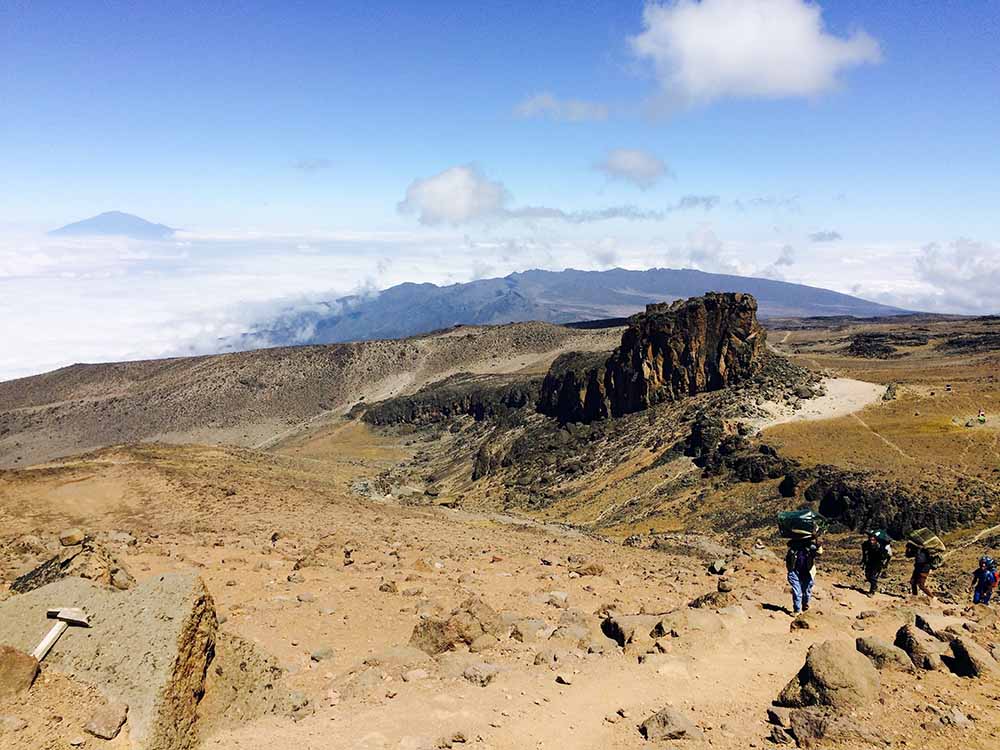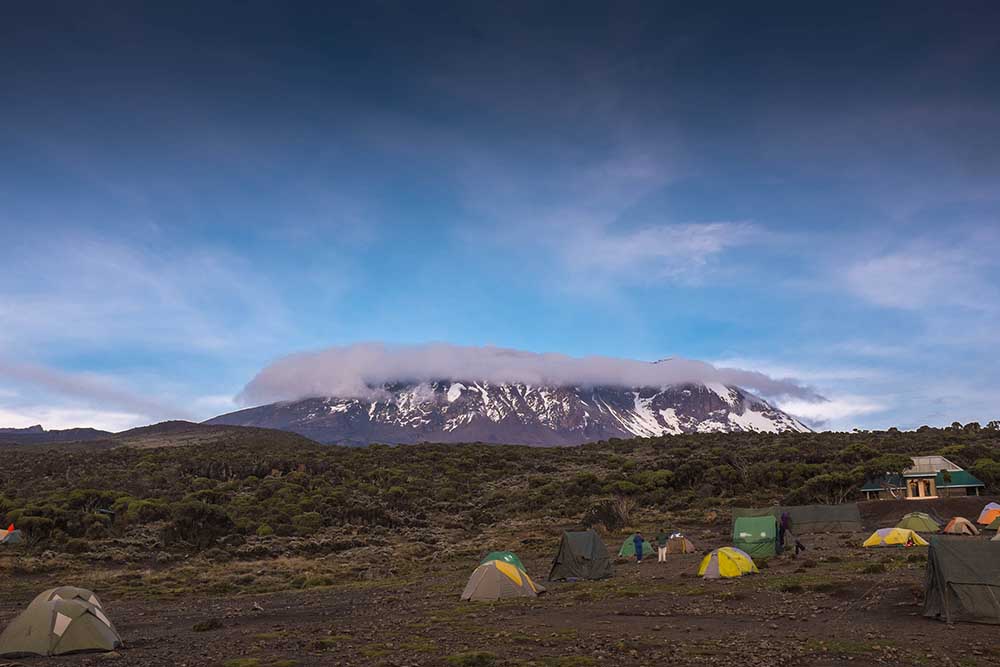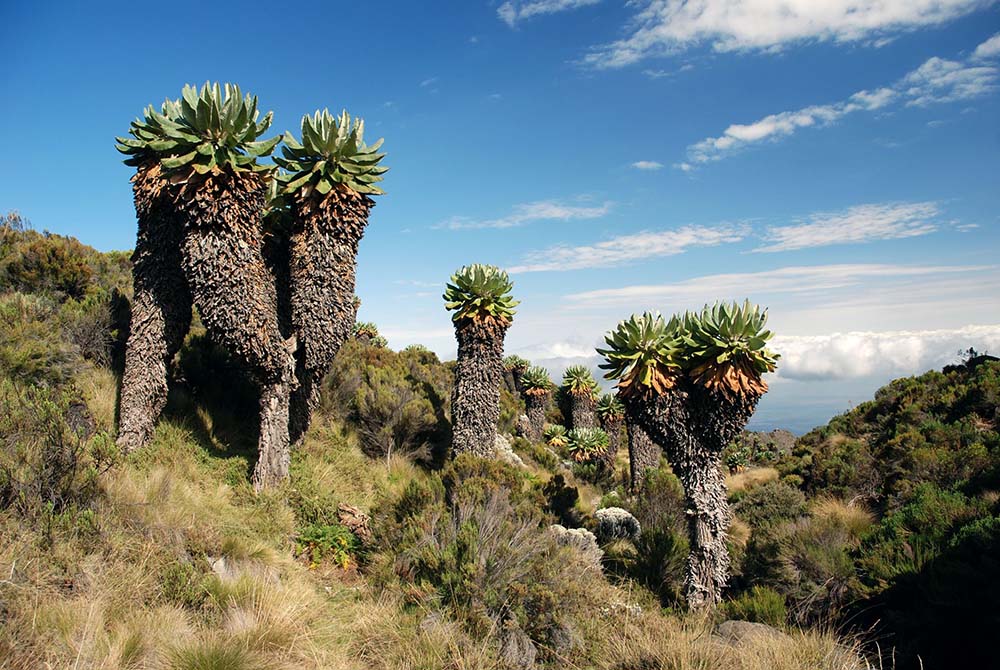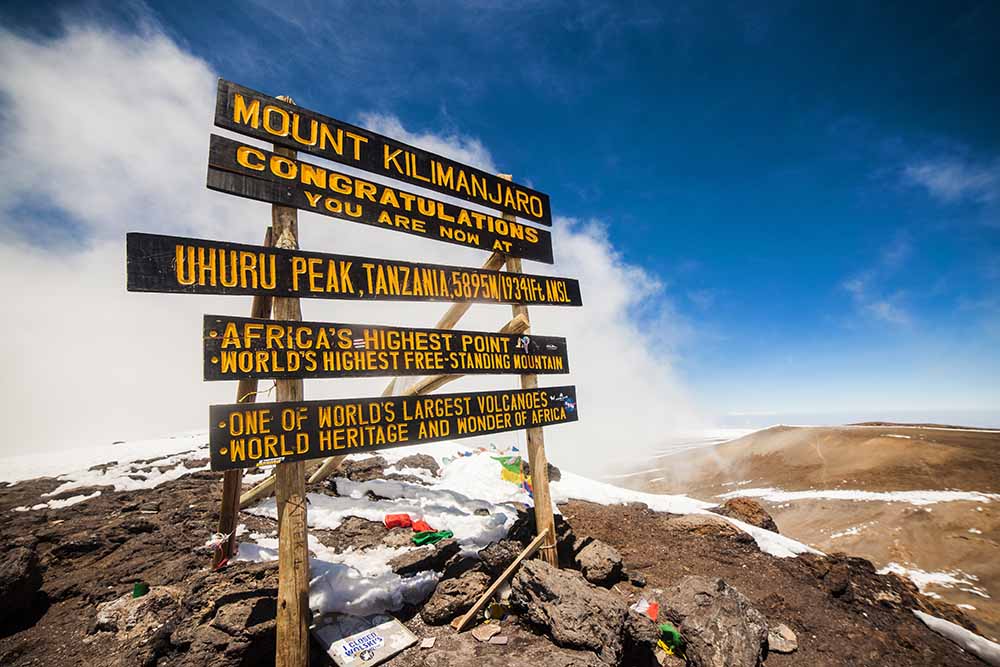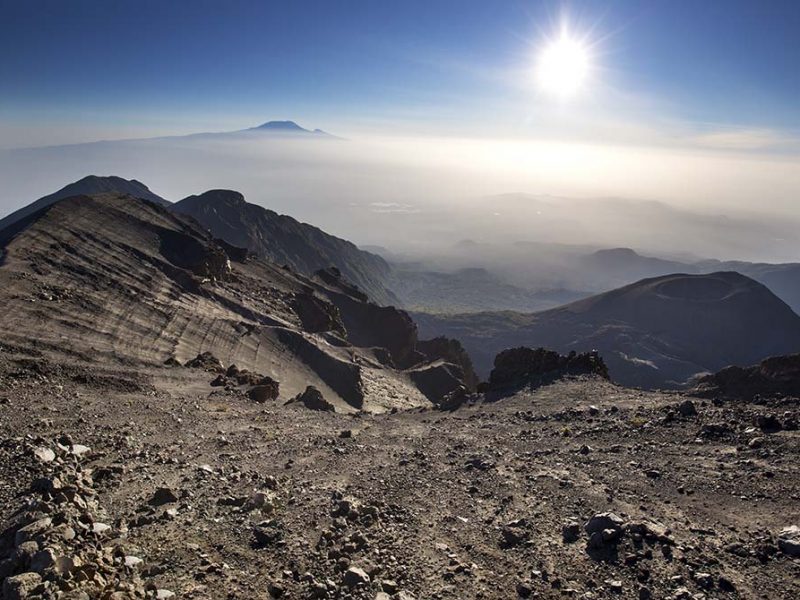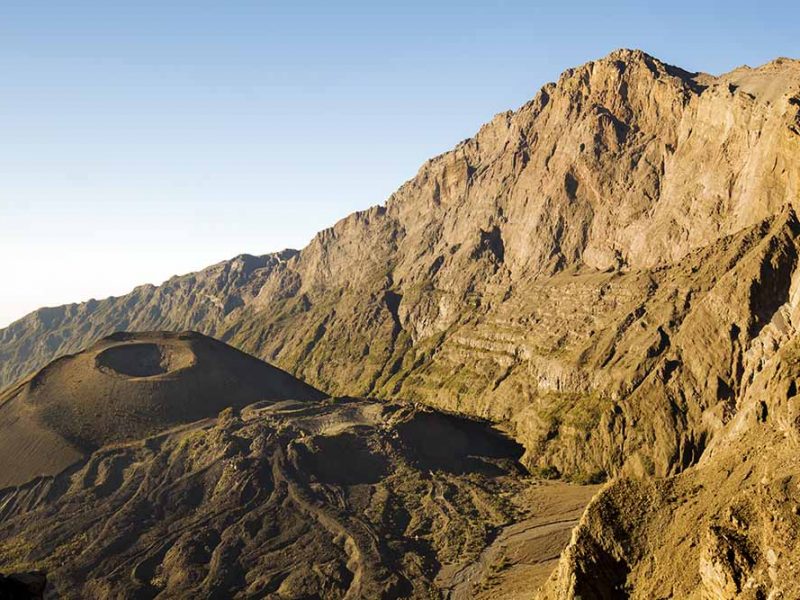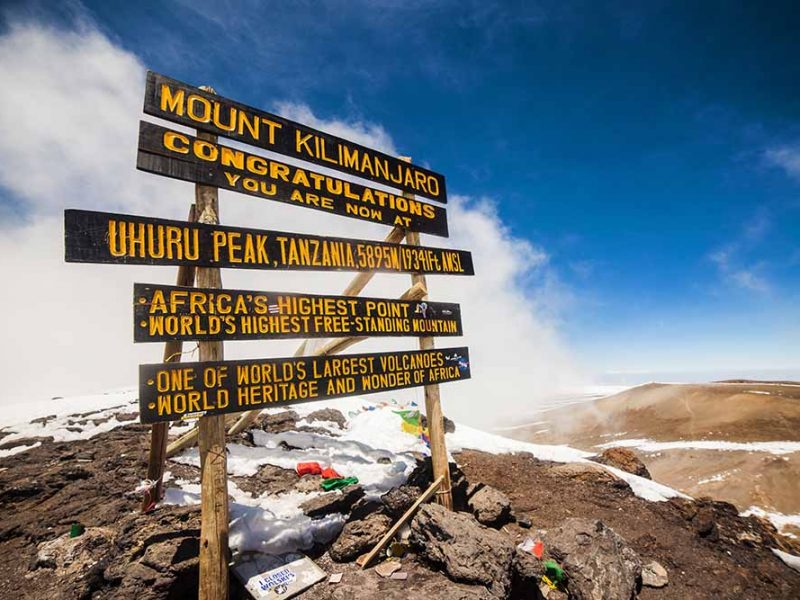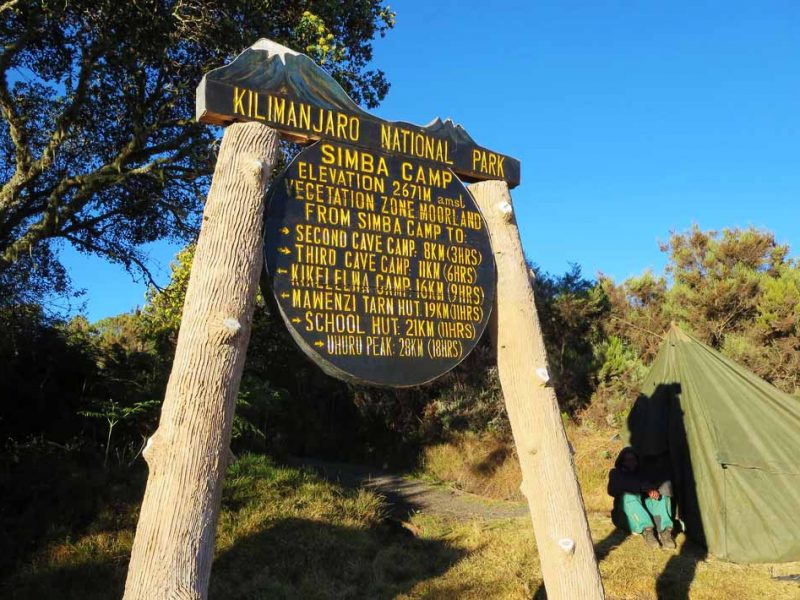
7 Days Shira Route Kilimanjaro Trek
The Shira Route is a difficult route that begins in the west, at Shira Gate. What is unque about Shira is that the first section of the trail is not hiked, but rather driven. Therefore, climbers using Shira will miss out on hiking up one of Kilimanjaro’s ecological zones, the rain forest. An off road vehicle transports climbers to the Shira gate, located at 11,500 feet, where the hike begins to Simba Camp. This is a sizable altitude gain for someone who slept at Moshi or Arusha on their previous night. Complications from altitude can occur due to failed acclimatization.
The route takes six days minimum to complete, although seven days is recommended. The descent is down Mweka, in the south-east. Because the starting point is far from Moshi and Arusha, it is more expensive to climb this route due to the added transportation cost of getting climbers to the gate. Scenicaly, Shira is beautiful because it crosses the spectacular Shira Plateau, and then combines with the Machame route to share its viewpoints around the southern circuit. Shira has low traffic until it combines with Machame.
Day 1: Londorossi gate – Shira camp (3600m) (Hiking time: 3-4 hours, Habitat: Moorland)
The day of walking that begins from Londorossi National Park gate (2,250 m.) through farmland and plantations, and continues climbing steadily on a broad track through shrub forest and stands of giant heather to reach the rim of Shira Plateau (3,350 m.) The views across the surrounding plains open out as we climb and the area is home to a variety of game including buffalo. Our first camp is in the centre of the plateau at “Shira One” (3,550 m.) [3-4 hours walking]
Day 2: Shira two camp (3840m) (Hiking time: 5-6 hours, estimated distance: 5km)
After breakfast continue hike east across the Shira Plateau past the Shira Cathedral towards Shira Two camp. We only gain 700 feet in elevation – this allows us to acclimatize slowly to the altitude. The views of the plateau are nothing less than spectacular. Overnight at Shira two camp 3850m
Day 3: Barranco (3950m) (Hiking time: 5hours, estimated distance: 6km)
Today is the last of the “easy days”. It is about a 7-hour superb hike. We pass the Lava Tower, around the southern flank of Kibo, and slowly descend into the spectacular Barranco Valley, interspersed with giant lobelia and senecia plants. After arriving at our most spectacular campsite, everyone stands in awe at the foot of Kibo Peak, looming high above, on our left. Our camp is only 465 feet higher than where we were last night, but during the day, we will have climbed to just over 14,000 feet. This is one of our most valuable days for acclimatization.
Day 4: Karanga Valley (4000m)(Hiking time: 4 hours, estimated distance: 4km)
On the eastern side of the valley, across the stream is the Barranco Wall – a 950 ft. barrier of volcanic rock. Although it is tall and looks steep, it is very easy to climb. This is our first challenge of the day. The views from the wall are nothing less than magnificent. The rest of the day is spent skirting the base of Kibo peak over our left shoulder. We descend down into the Karanga Valley, where we rest up for the night before the tough climb up to Barafu Camp.
Day 5: Barafu (4600m) (Hiking time: 3.5 hours, estimated distance: 4km )
First thing, you will be making a steep hike out of the valley. The air starts getting quite thin, and you will be running short of breath. It is a tough, but rewarding uphill to the rocky, craggy slopes at the camp. Barafu means, ice in Swahili, and it is extremely cold at this altitude. So, go to bed early because we will be waking you at midnight for the final leg to Uhuru Peak.
Day 6: Summit Uhuru peak (5895m) – Mweka camp (3100m) (Hiking time: 7 hours, estimated distance: 5km)
We will start our ascent by torchlight around midnight so that we can be up on the Crater rim by sunrise. The steep climb over loose volcanic scree has some well-graded zig-zags and a slow but steady pace will take us to Stella Point (5,735 m.), in about five or six hours. We will rest there for a short time to enjoy the sunrise over Mawenzi. Those who are still feeling strong can make the two hour round trip from here along the crater rim to Uhuru Peak (5,896 m.), passing close to the spectacular glaciers and ice cliffs that still occupy most of the summit area. The descent to Barafu is surprisingly fast, and after some refreshment, we continue to descend to reach our final campsite (3,800 m.) Millennium. Most of us will be too tired to notice the beauty of the forest surrounding. We spend our last night on the mountain at Mweka Camp.
Day 7: Mweka Camp 3,100 m/10,170 ft to Mweka Gate 1,980 m/6,500 ft to Arusha (890 m/2,920 ft) 15 km, 3 hours Forest
After a deserved strong breakfast it is a short scenic 3-hours hike back to the park gate. Please all tips to porters and guides is given once all crew and the clients gears reached the mweka gate safely, but remember to tip your staff at the gate. At Mweka Gate, you can sign your name and add details in a register. This is also where successful climbers receive their summit certificates. Climbers who reached Stella Point are issued green certificates and those who reached Uhuru Peak receive gold certificates. From the Mweka Gate, you will continue down to the Mweka Village, possibly a muddy, 3 km, 1 hour hike if the road is too muddy for vehicles. In Mweka Village a delicious hot lunch will be served after which you are driven back to Moshi for an overdue hot shower and comfortable night in a nice hotel in Moshi.
Included:
- Return transport from Arusha/Moshi to Mount Kilimanjaro
- Use of our professional Mountain Guides/potters
- Accommodation in Mountain Huts/tents where applicable
- Three meals a day while on the mountain
- All park entrance fees and Taxes
Excluded:
- All your climbing gears
- Personal insurance
- Personal spending money
- Tips for guide, potter and cook.


